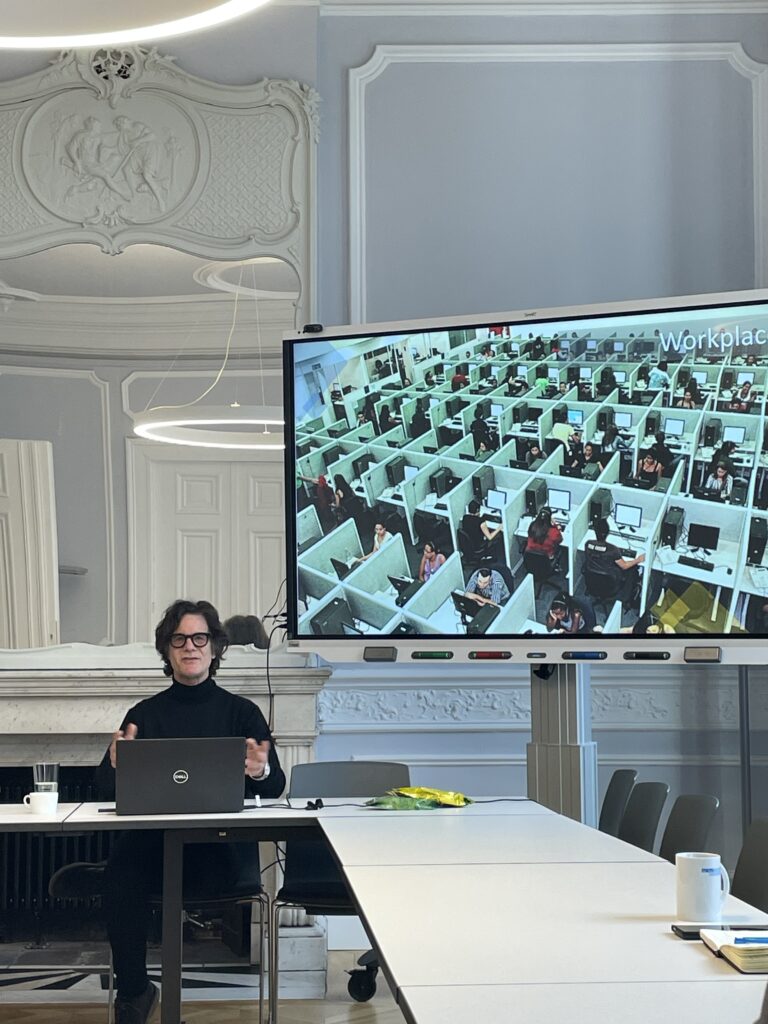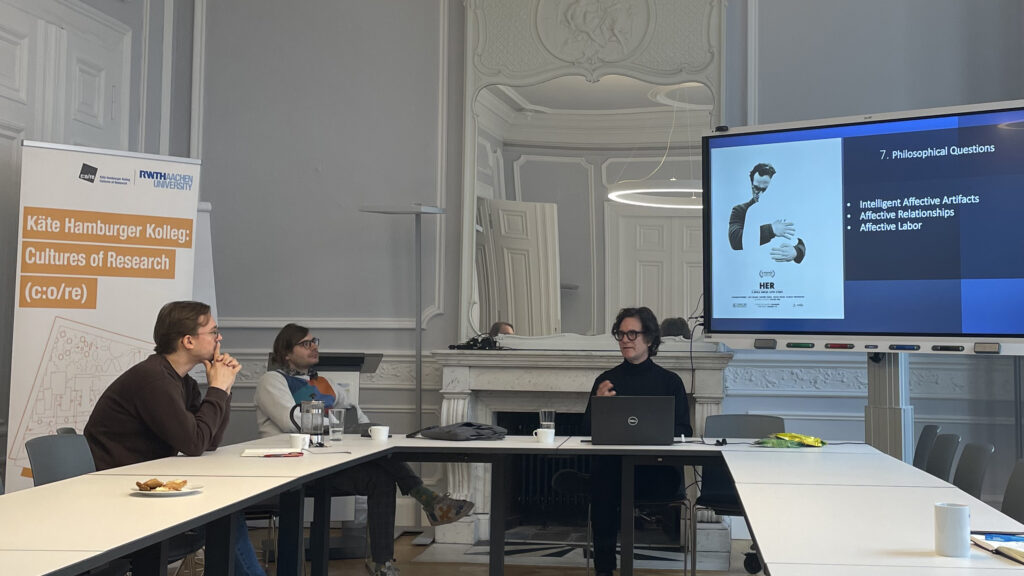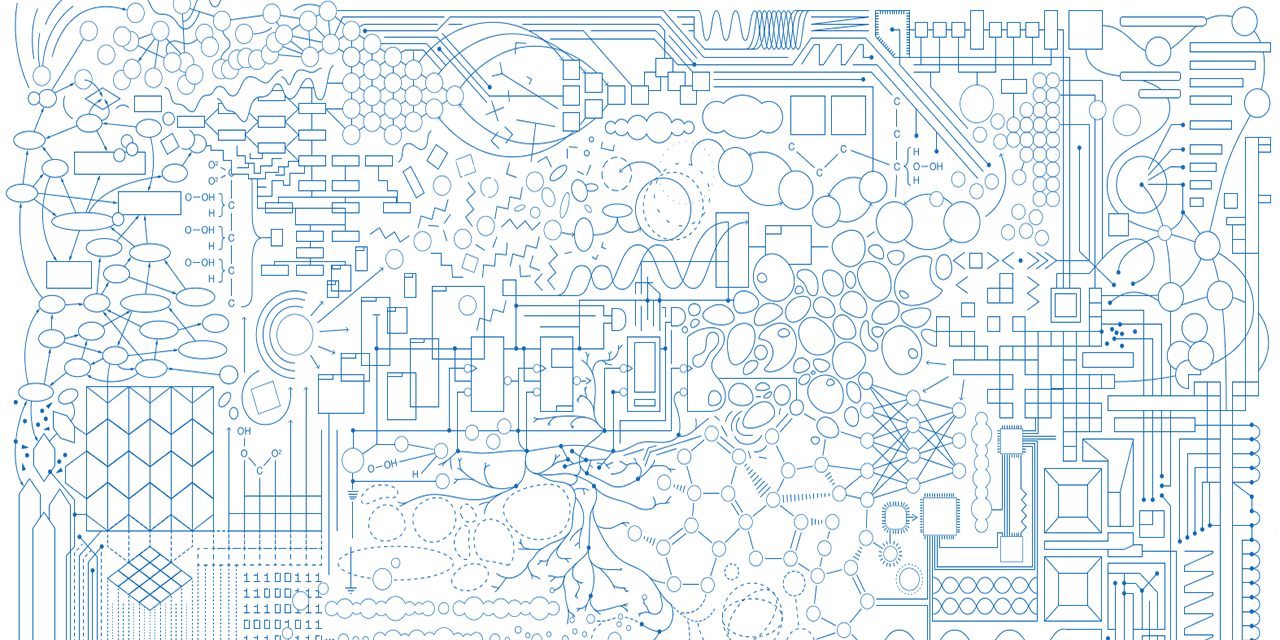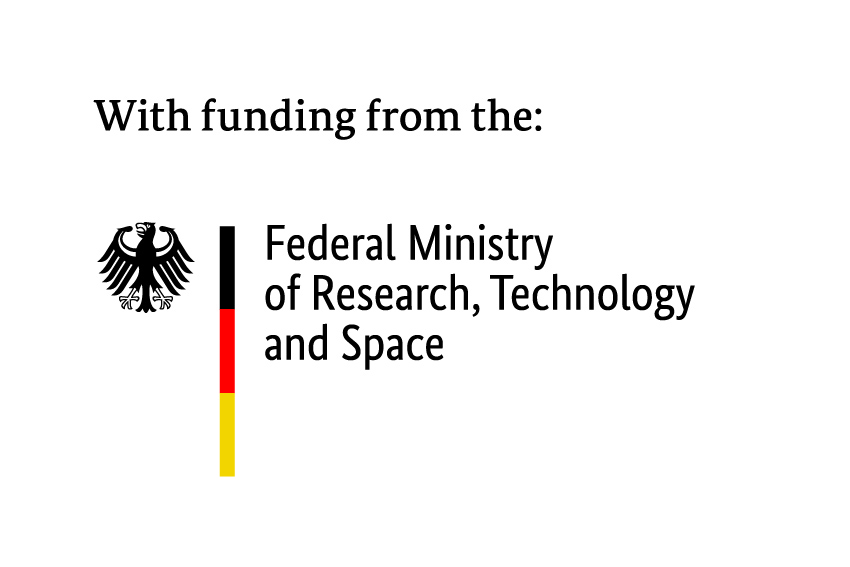c:o/re Movie Nights

We are looking forward to the collaboration with the film studio of RWTH Aachen University! As part of the lecture series of the Käte Hamburger Kolleg: Cultures of Research (c:o/re) in the summer semester “Lifelikeness” we will show two movies:
May 29: Her by Spike Jonze (2013), at 8:15 pm. As an introduction before the film, philosopher Ben Woodard (ICI Berlin) will give a lecture entitled “Ideal Locale – her and the envelope function of idealist predication”. The lecture will take place on May 29 at 3 pm at Theaterstraße 75. Please send us an email if you would like to come to the lecture: events@khk.rwth-aachen.de
June 11:. I’m a Cyborg, But That’s OK by Park Chan-wook. The film will be preceded by a short introduction and followed by a discussion moderated by the Käte Hamburger Kolleg: Cultures of Research.
By “Lifelikeness” we mean the representation and/or imitation of living beings in science and technology in fields such as robotics, synthetic biology or AI and neuromorphic computing. We ask how their increasing complexity mimics not only a fixed notion of life, but also the understanding of “life” as such.
Further information on the lecture series can be found on this page.

Lecture Series Summer 2024: Lifelikeness

Due to the great interest, the lecture series of the summer semester 2024 will once again be held on the topic of “Lifelikeness”.
Various speakers, including the sociologist Hannah Landecker (University of California, Los Angeles) and the historian of science Friedrich Steinle (TU Berlin), will be guests at the KHK c:o/re and shed light on “Lifelikeness” from different disciplinary perspectives.
Please find an overview of the dates and speakers in the program.
The lectures will take place from May 8 to July 3, 2024 every second Wednesday from 5 to 6.30 pm in presence and online.
An exception is the lecture by Hannah Landecker, which she will give as part of the interdisciplinary conference “Politics of the Machines” on Tuesday, April 23, 2024 from 5:30 to 7 p.m. in the Super C- Generali Saal.
If you would like to attend the lectures, please send a short email to events@khk.rwth-aachen.de.

Program: PoM Conference in Aachen
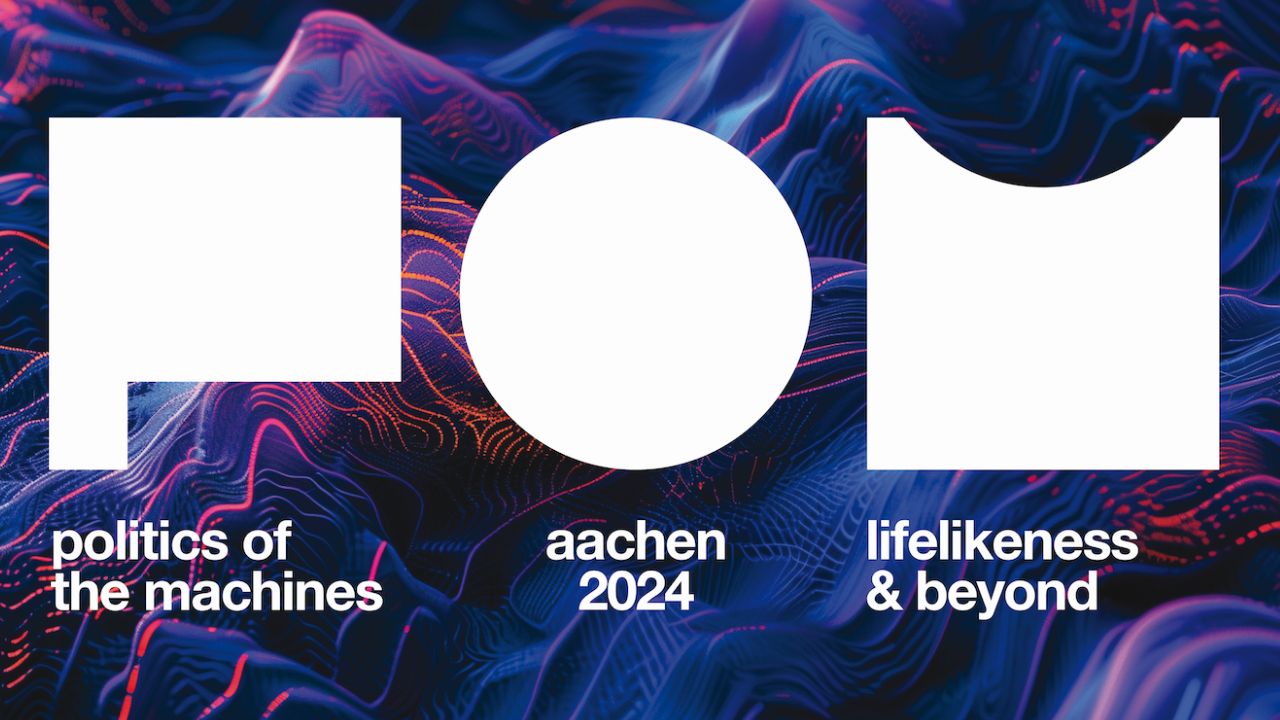
Programmable biosensors, life-like robotics and other artificial models – the present and the future are dominated by new phenomena in the life sciences. How can the challenges, opportunities and uncertainties associated with these advances be addressed?
The transdisciplinary conference series “PoM – Politics of the Machines”, which will take place from April 22 to 25, 2024 at the Super C at RWTH Aachen University (Templergraben 57, 52062 Aachen) under the title “Lifelikeness & beyond”, will explore this question. At the interface of science and art, the conference aims to stimulate reflection on the comprehensive connections that shape our perception of the world.
International researchers and practitioners from various fields of science, technology and art will come together to discuss socio-cultural concepts of the future, the interaction between human and machine and ideas of the living and non-living in different formats.
The main program from 22 to 25 April will take place in Aachen in the Super C of the RWTH Aachen University and in the LOGOI Institute.
Super C: Templergraben 57, 52062 Aachen
LOGOI Institute: Jakobstraße 25a, 52064 Aachen
You can register with this form.
Further information on the schedule can be found in this program.
You can find a longer version with all abstracts in this program.
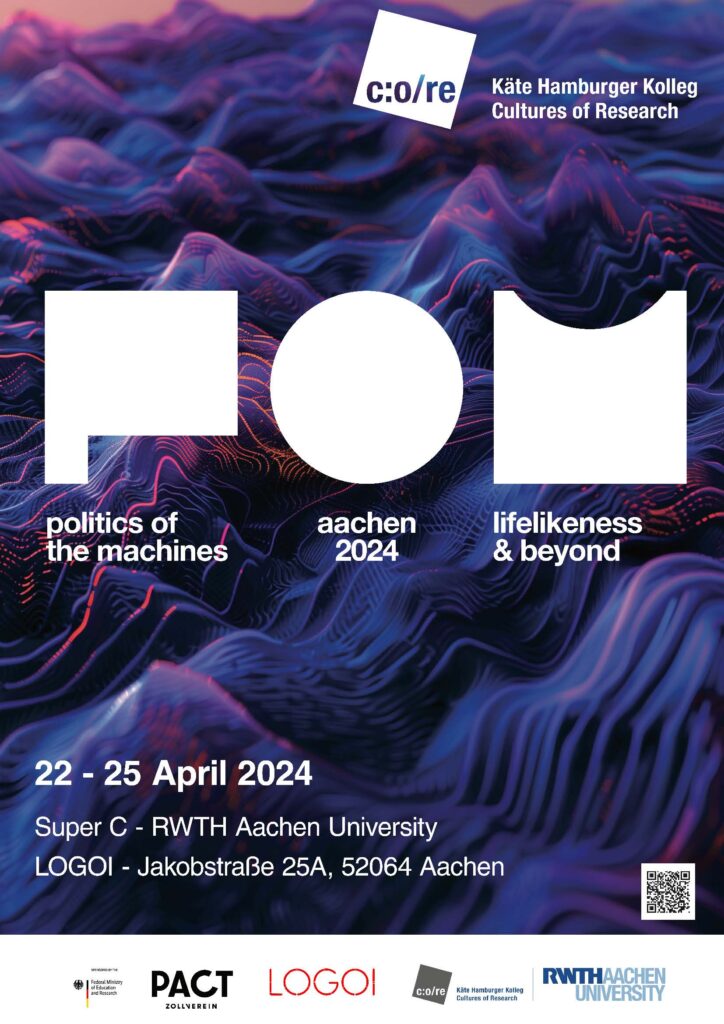
On Thursday, April 25, Dr. Jürgen Kippenhan will give a talk on “Artificial intelligence and the sensory structures of human speech, thought and action” as part of the “POM Conference” at LOGOI, Jakobstraße 25a, 52064 Aachen.

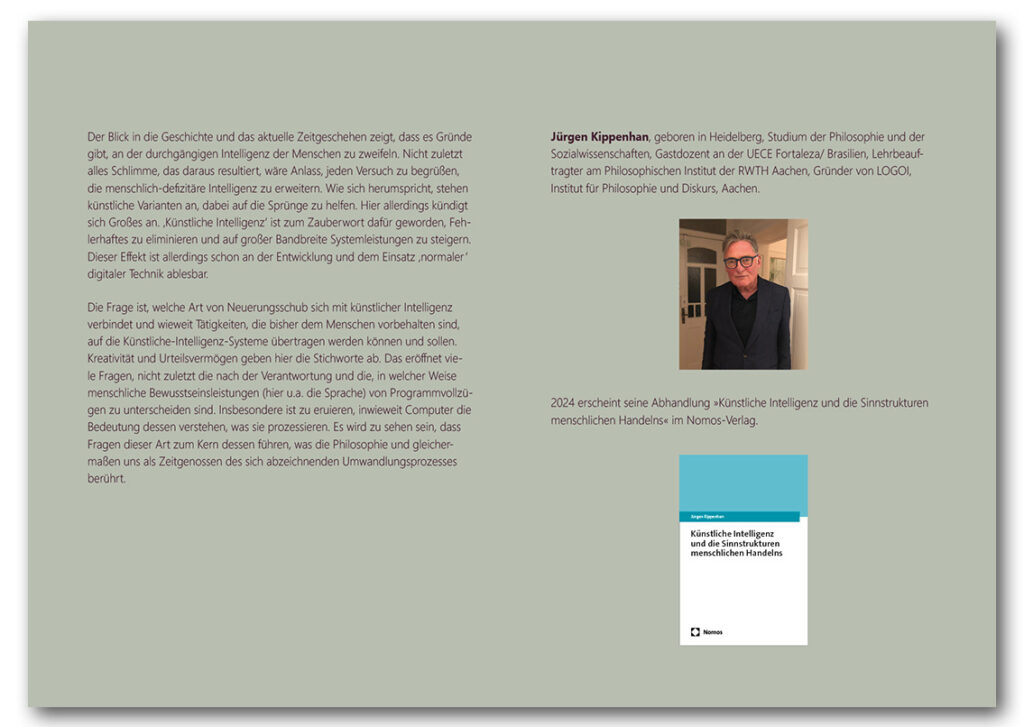
As part of the conference, the choreographic centre PACT Zollverein in Essen will realize the accompanying programme ‘life.like’ on 26 and 27 April 2024, which consists of six artistic positions in the form of performance, installation, discourse and sound.
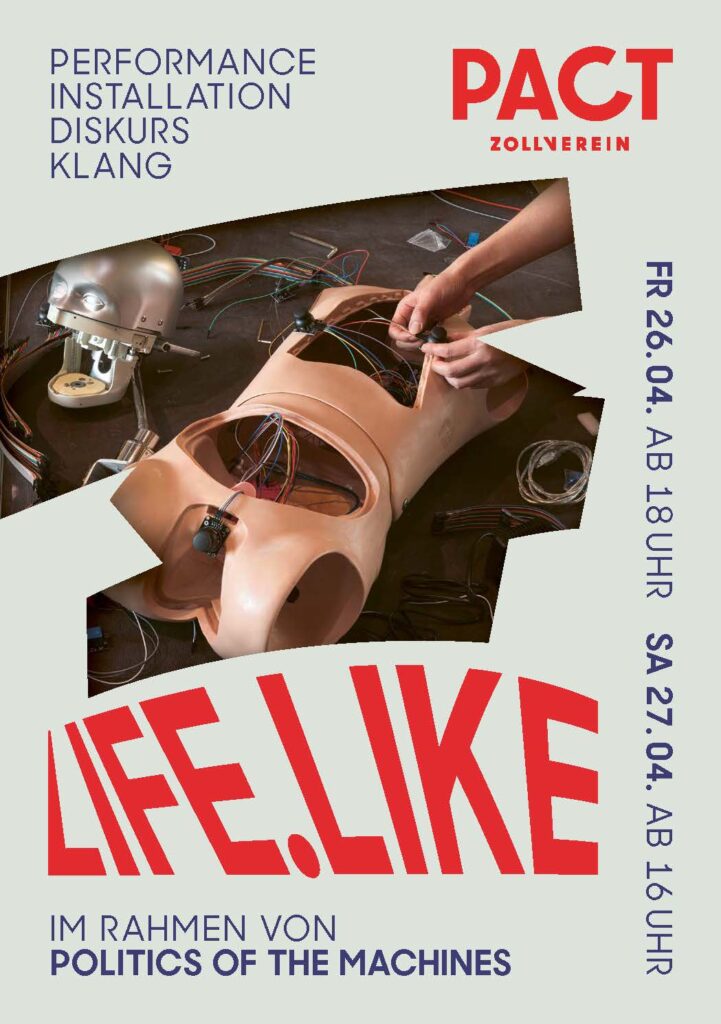
‘Lifelikeness & beyond’ is the fourth edition of the “Politics of the Machines” conference series, founded by Laura Beloff (Aalto University Helsinki) and Morten Søndergaard (Aalborg University Denmark) and organized in collaboration with RWTH Aachen University, LOGOI Institute for Philosophy and Discourse and PACT Zollverein in Essen.
Theodore von Kármán Fellowship to Professor Reiner Grundman
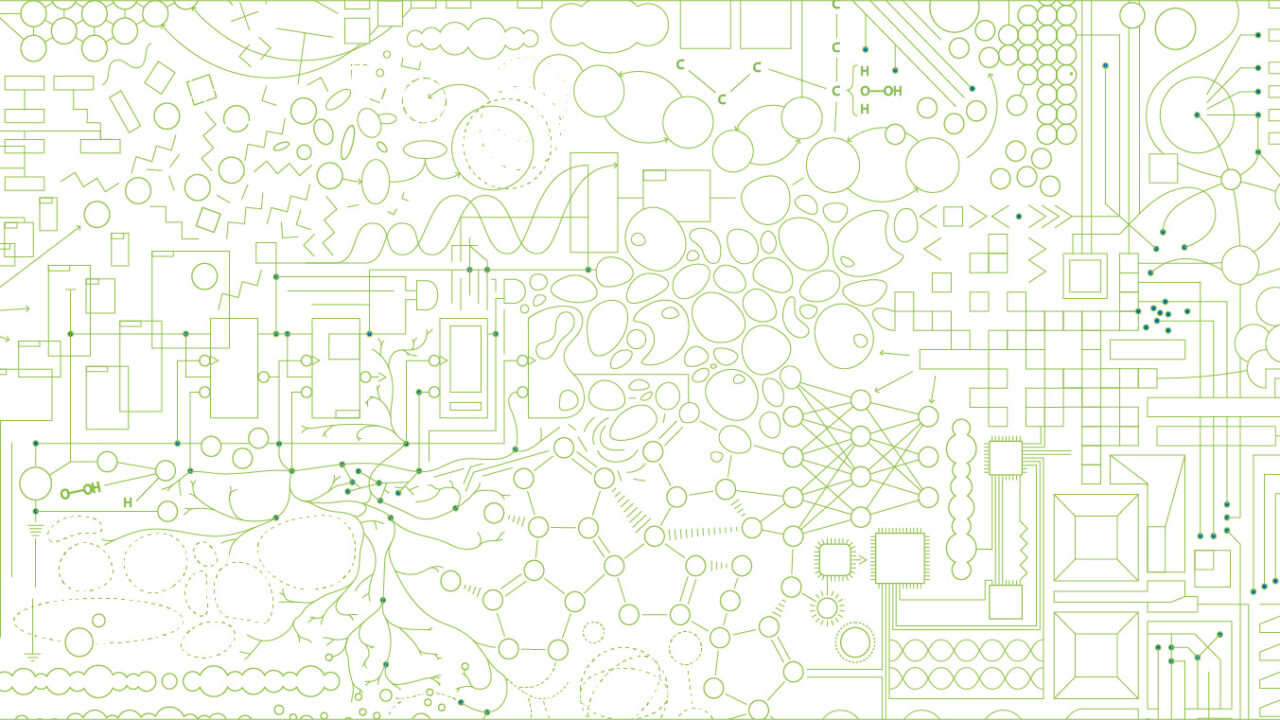
Reiner Grundmann, Professor of Science and Technology Studies (STS) at the University of Nottingham, has been awarded the Theodore von Kármán Fellowship by RWTH Aachen University.
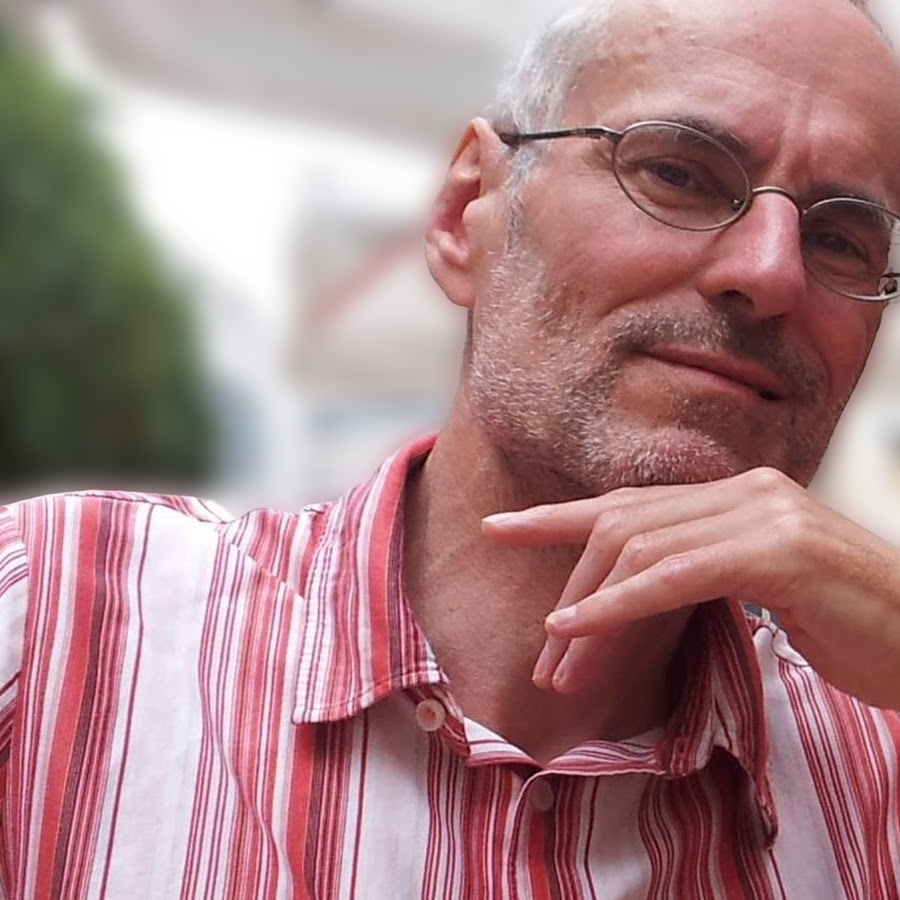
Professor Holger Hoos (Chair for Methodology of Artificial Intelligence), Professor Frank Piller (Chair of the Institute for Technology and Innovation Management) and KHK c:o/re Director Professor Stefan Böschen jointly applied for the fellowship. The fellowship thus strengthens interdisciplinary cooperation in the field of artificial intelligence (AI).
The fellowship enables Reiner Grundmann to spend seven weeks at the Käte Hamburger Kolleg: Cultures of Research (c:o/re) at RWTH Aachen University, where he will work on a project entitled “Communication Unbound: The Discourse of Artificial Intelligence” from April to May 2024. It investigates the discourse on forms of AI based on large language models and the challenges they pose to society. His current work focuses on the relation between knowledge and decision making, with a special interest in the role and nature of expertise in contemporary societies. To present the outcomes of this fellowship, Reiner Grundmann will give a public university lecture on May 15, 2024, 5-6.30 pm, at KHK c:o/re, Theaterstr. 75.
RWTH Kármán-Fellowships are funded by the Federal Ministry of Education and Research
(BMBF) and the Ministry of Culture and Science of the German State of North Rhine
Westphalia (MKW) under the Excellence Strategy of the Federal Government and the
Länder.


Objects of Research: Sarah R. Davies
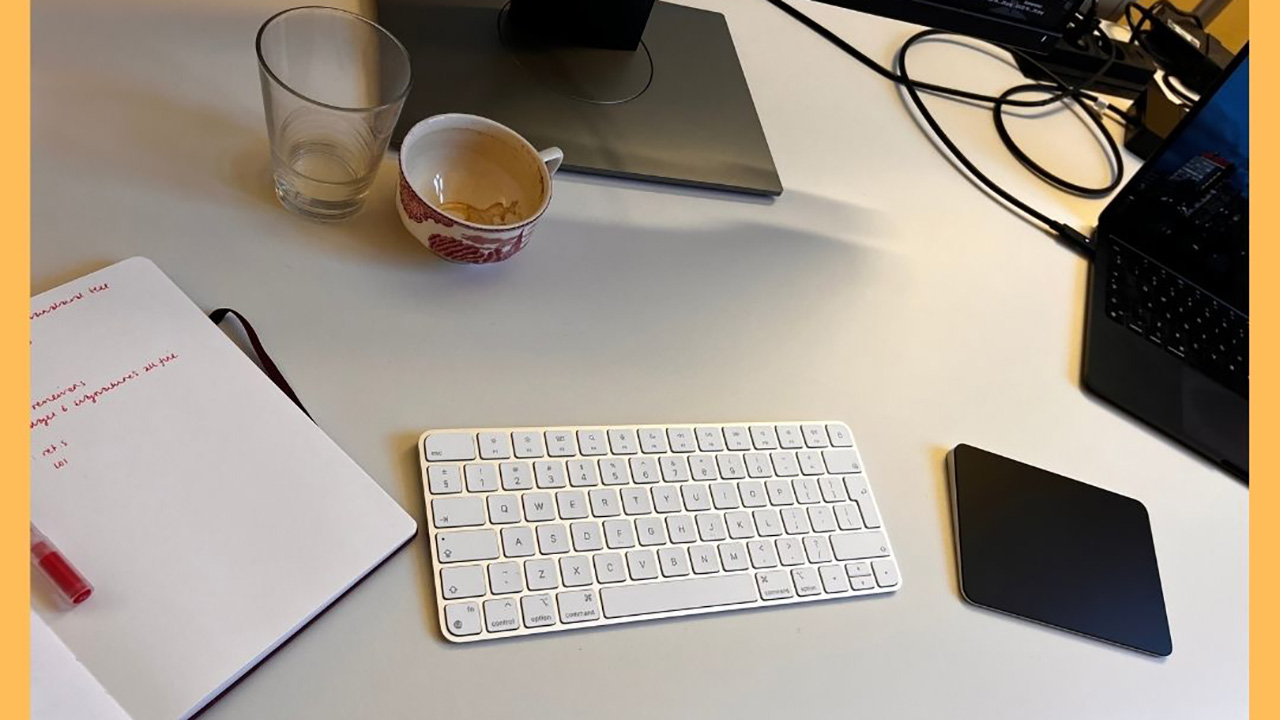

For today’s edition of the “Objects of Research” series, c:o/re Senior Fellow Sarah R. Davies gives an insight into her desk set up. As a professor of Technosciences, Materiality, and Digital Cultures, her work focuses on the intersections between science, technology, and society, with a particular focus on digital tools and spaces.
“I guess many academics would share some varient of this image: a careful arrangement of computer equipment, coffee, notepads, pens, and the other detritus that lives on (my) desk.
For me it’s important that the technical equipment is shown in conjunction with the paper notebook and pens. I’m fussy about all of these things – it’s distracting when my computer set-up isn’t what I’m used to, and I need to use very specific pens from a particular store – but ultimately my thinking lives in the interactions between them.
My colleagues and I are working on an autoethnographic study of knowledge production, and notice that (our) creative research work often emerges as we move notes and ideas from paper to computer (and back again).”

Would you like to find out more about our Objects of Research series at c:o/re? Then take a look at the pictures by Benjamin Peters, Andoni Ibarra, Hadeel Naeem, Alin Olteanu, Hans Ekkehard Plesser, Ana María Guzmán, Andrei Korbut, Erica Onnis, Phillip H. Roth, Bart Penders and Dawid Kasprowicz.
Objects of Research: Dawid Kasprowicz
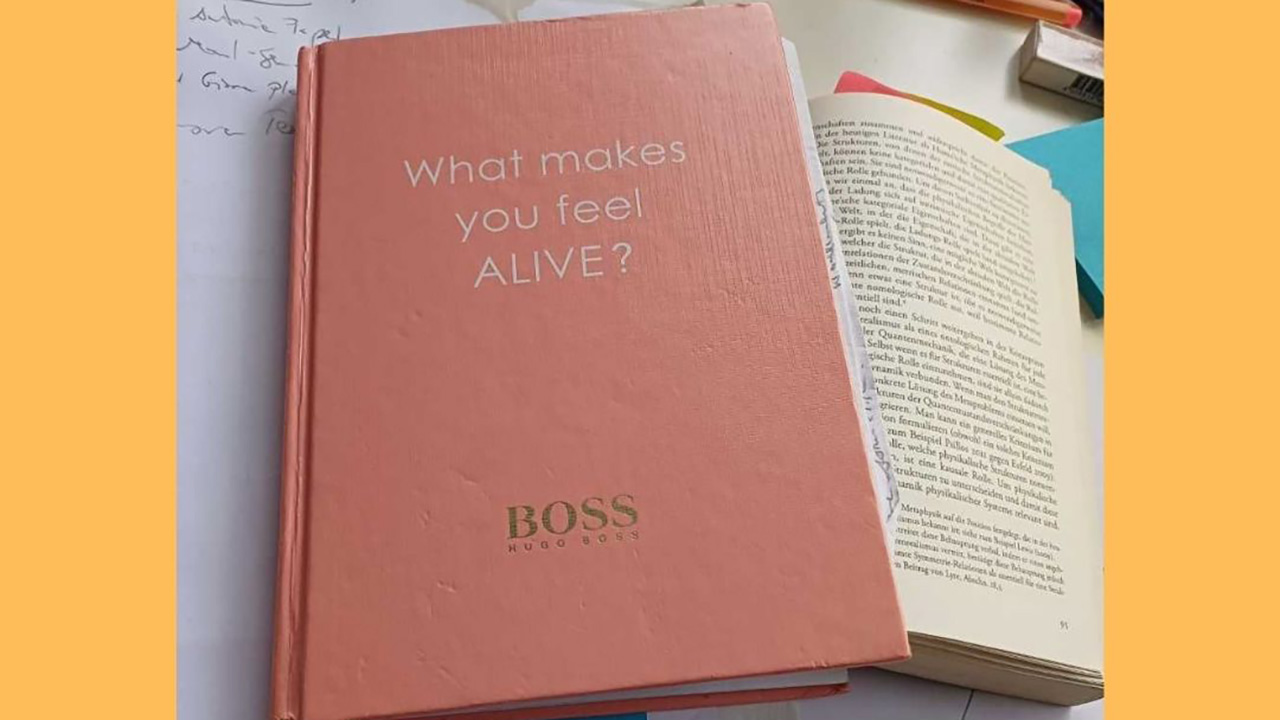
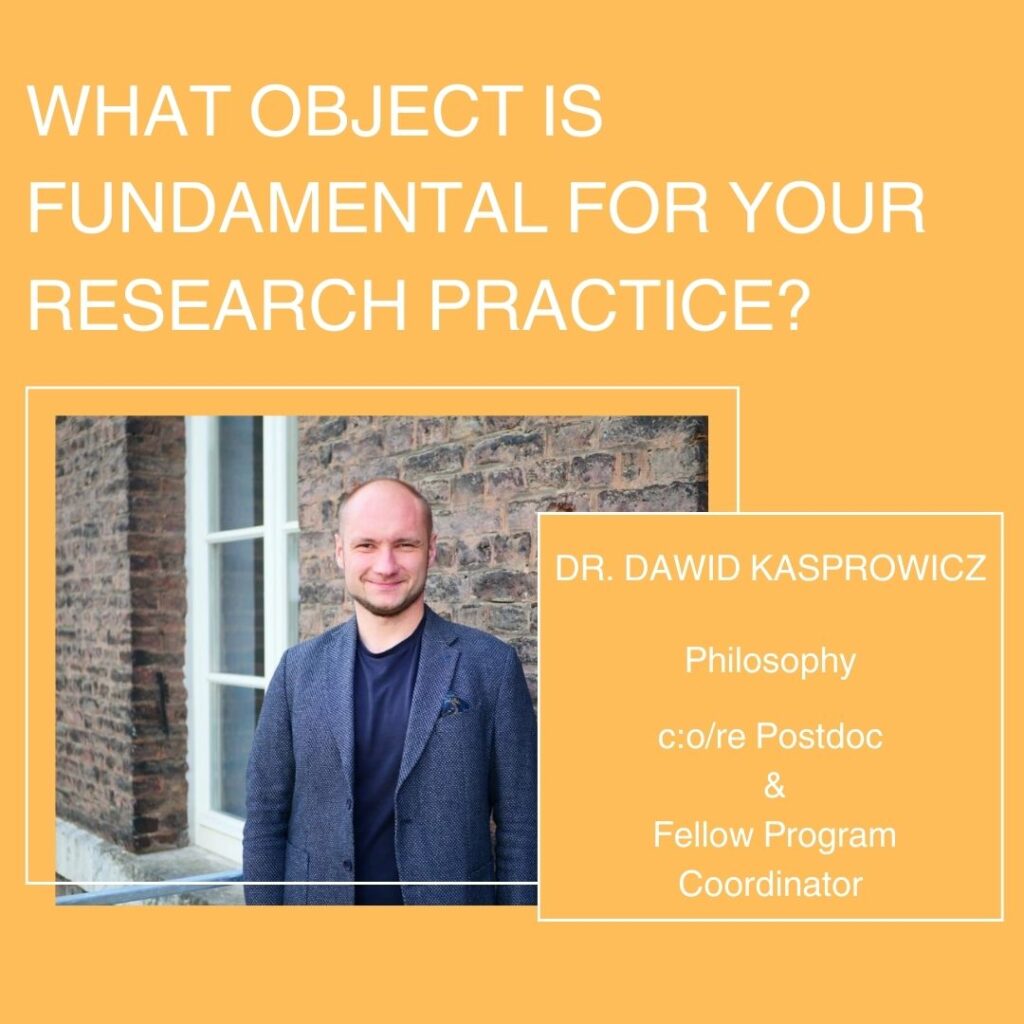
Presenting the next chapter of the “Objects of Research” series, c:o/re Postdoc and Fellow Program Coordinator, Dr. Dawid Kasprowicz, whose main research fields include theory and history of embodiment, phenomenology, human-robot-Interaction, philosophy of computer simulation, joins us with a picture of his fundamental object for his research practice:
“This is a notebook my Mom gave me. She had it as a kind of leftover from a shopping tour and she thought that it might be of use for my work. And of course, she was right. And as you know, research always starts with a good question that attracts attention.”
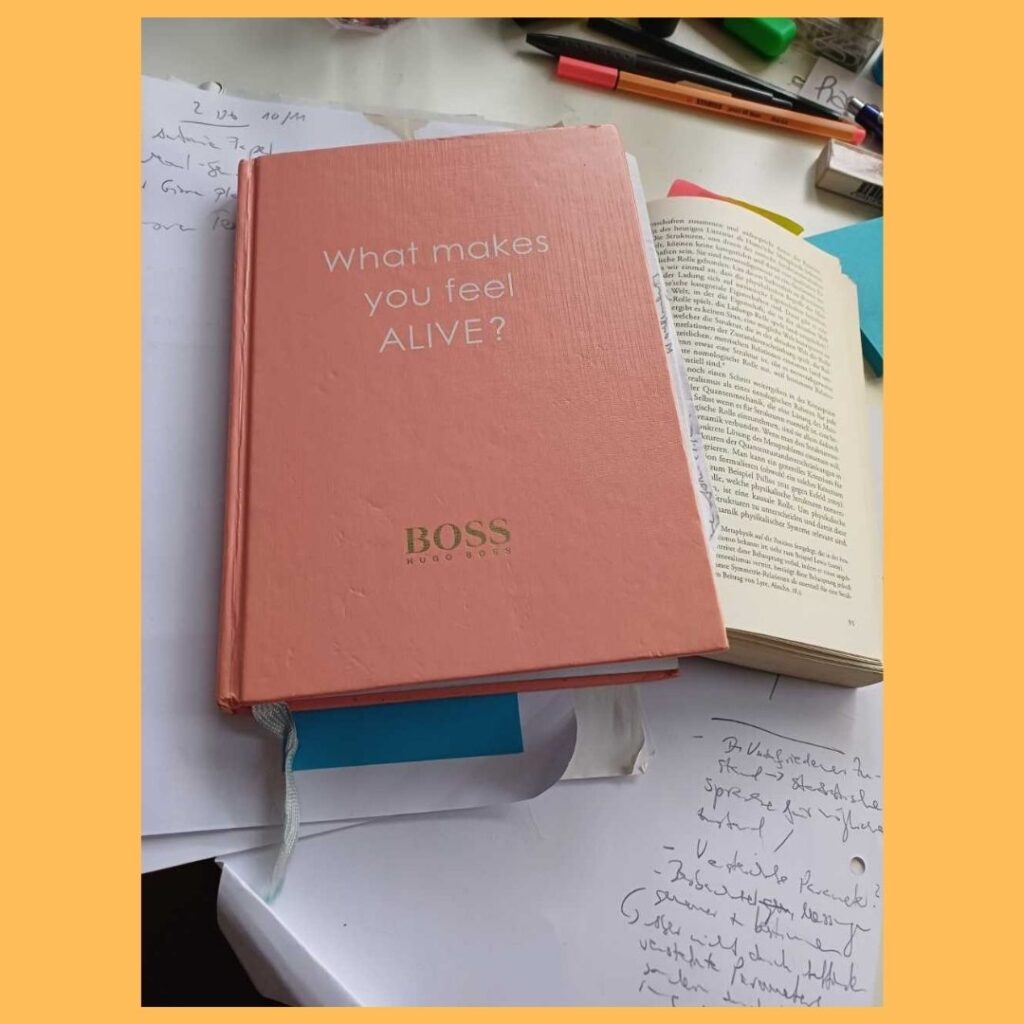
Would you like to find out more about our Objects of Research series at c:o/re? Then take a look at the pictures by Benjamin Peters, Andoni Ibarra, Hadeel Naeem, Alin Olteanu, Hans Ekkehard Plesser, Ana María Guzmán, Andrei Korbut, Erica Onnis, Phillip H. Roth and Bart Penders.
Get to know our Fellows: Guillaume Yon

Get to know our current fellows and gain an impression of their research.
In a new series of short videos, we asked them to introduce themselves, talk about their work at c:o/re, the impact of their research on society and give book recommendations.
You can now watch the sixth video of Dr. Guillaume Yon, historian of economics, on our YouTube channel:
Check out our media section or our YouTube channel to have a look at the other videos.
Objects of Research: Bart Penders

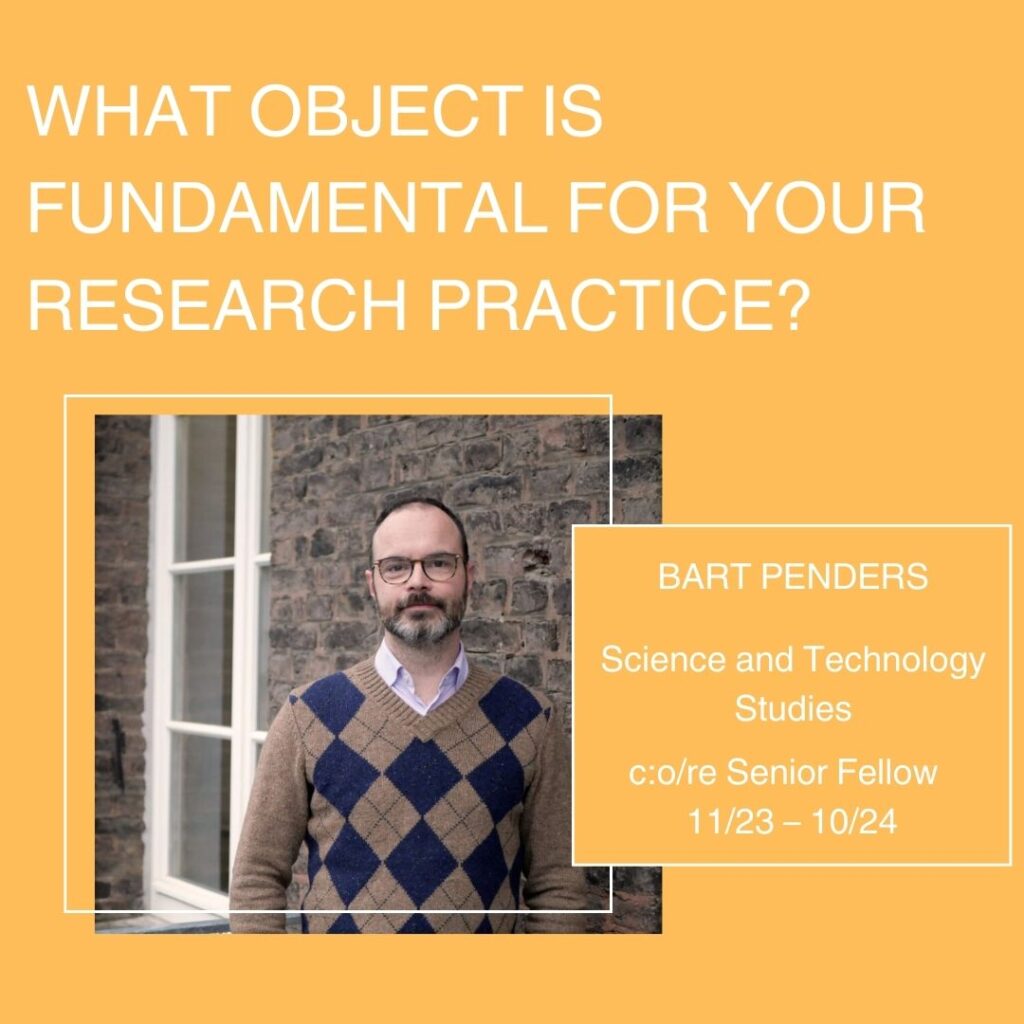
Here comes the new edition of our “Objects of Research” series. c:o/re Senior Fellow Dr. Bart Penders provides an insight into his research work and introduces an important tool for this:
“As part of the work I do at KHK c:/ore, as well as extending beyond that, I collect empirical data. In my case, that data consists of records of interviews with scientists and others. Those records can be notes, but they can also be integral recordings of the conversations.
Relying on technology for the production of data is what scientists do on a daily basis. With that comes a healthy level of paranoia around that technology. Calibrating measurement instruments, measurement triangulation, and comparisons to earlier and future records all help us to alleviate that paranoia. I am not immune and my coping mechanism has been, for many years, to take a spare recording device with me.
This is that spare, my backup, and thereby the materialisation of how to deal with moderate levels of technological paranoia. It is not actually a formal voice recorder, but an old digital music player I have had for 15 years, the Creative Zen Vision M. It has an excellent microphone, abundant storage capacity (30 gigabytes) and, quite importantly, no remote access options. That last part is quite important to me, because it ensures that the recording cannot enter the ‘cloud’ and be accessed by anyone but me. Technologically, it is outdated. It no longer serves its original purpose: I never listen to music on it. Instead, it has donned a new mantle as a research tool.”

Would you like to find out more about our Objects of Research series at c:o/re? Then take a look at the pictures by Benjamin Peters, Andoni Ibarra, Hadeel Naeem, Alin Olteanu, Hans Ekkehard Plesser, Ana María Guzmán, Andrei Korbut, Erica Onnis and Phillip H. Roth.
Objects of Research: Phillip H. Roth


For this edition of the “Objects of Research” series, c:o/re postdoc and event coordinator Dr. Phillip H. Roth shows a picture of his favorite research tool. He is currently working on a book/habilitation project that will be a media history of preprints in science.
“I use mechanical pencils (like the one in the photo) to highlight, annotate, question, clarify, or reference things I read in books. This helps me digest the arguments, ideas, and discourses I deal with in my historical and sociological research. I also have software for annotating and organizing PDFs on my iPad as well as a proper notebook for excerpting and writing down ideas. However, I’ve found that the best way for me to connect my reading practices with my thoughts is through the corporeal employment of a pencil on the physical pages of a book.”

Would you like to find out more about our Objects of Research series at c:o/re? Then take a look at the pictures by Benjamin Peters, Andoni Ibarra, Hadeel Naeem, Alin Olteanu, Hans Ekkehard Plesser, Ana María Guzmán, Andrei Korbut and Erica Onnis.
Inaugurating the collaboration of c:o/re and Ritsumeikan University on Emotionalized Artificial Intelligence
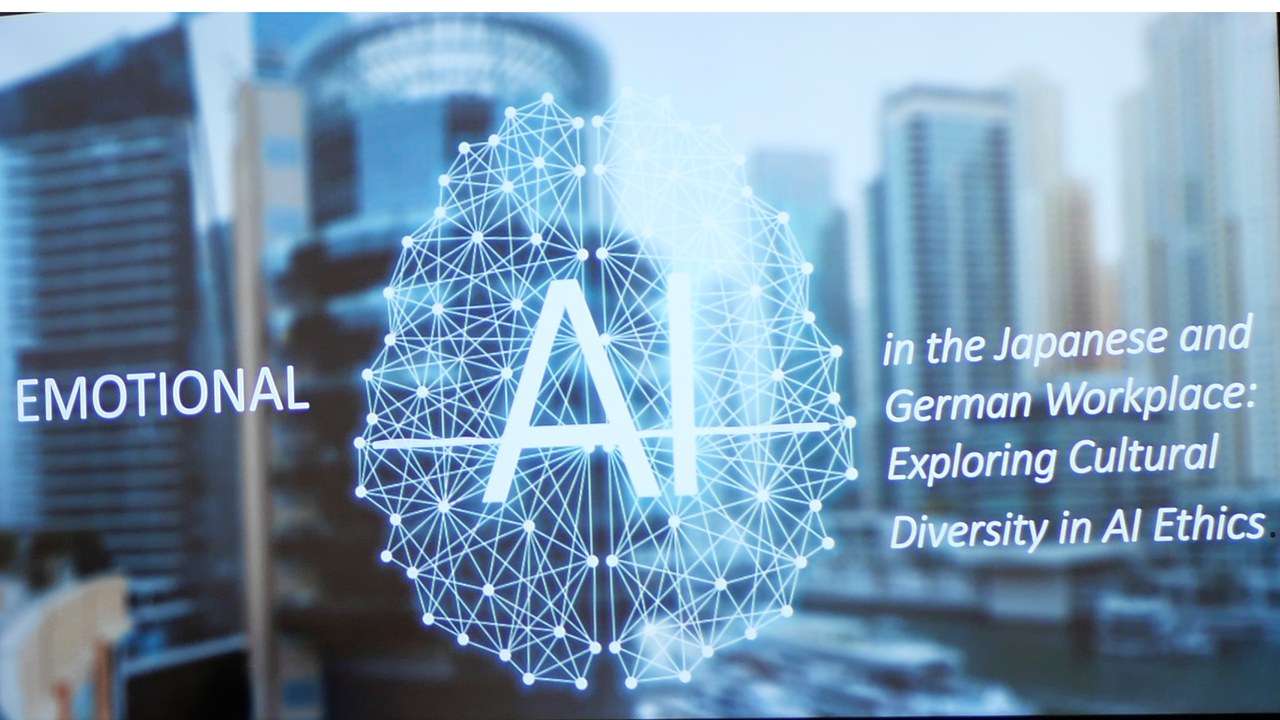
We are delighted to be commencing a collaboration on Emotionalized Artificial Intelligence with colleagues at Ritsumeikan Asia Pacific University. Professor Peter Mantello (Ritsumeikan Asia Pacific University) leads a project funded by the Japan Society for the Promotion of Science, on which c:o/re is a partner, that over the coming three years will compare attitudes in Japan and in Germany on Emotionalized Artificial Intelligence in the workspace. This is explorative pathway contributes to the c:o/re outlook on Varieties of Science.
Being hosted as a short-term fellow at c:o/re, on February 15th, Professor Peter Mantello inaugurated this collaboration by presenting the rationale and framework of this project.
